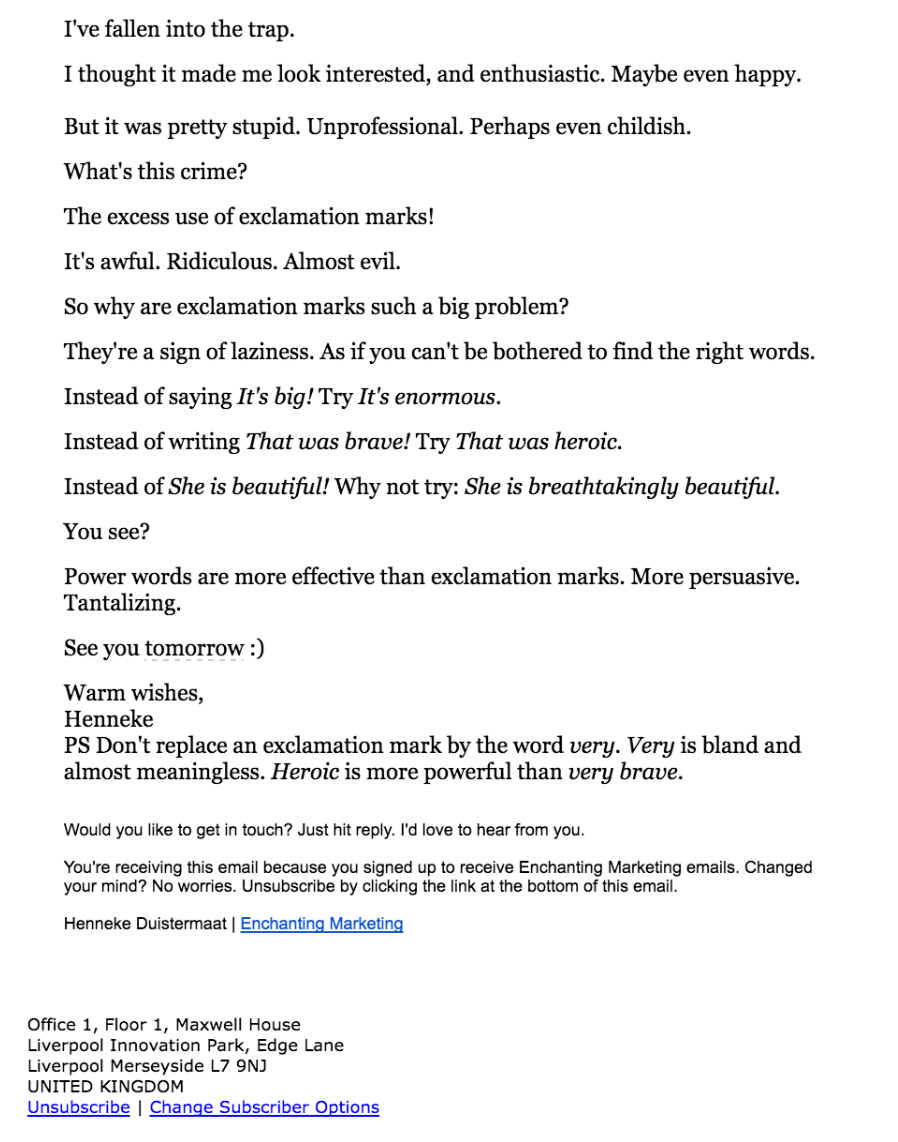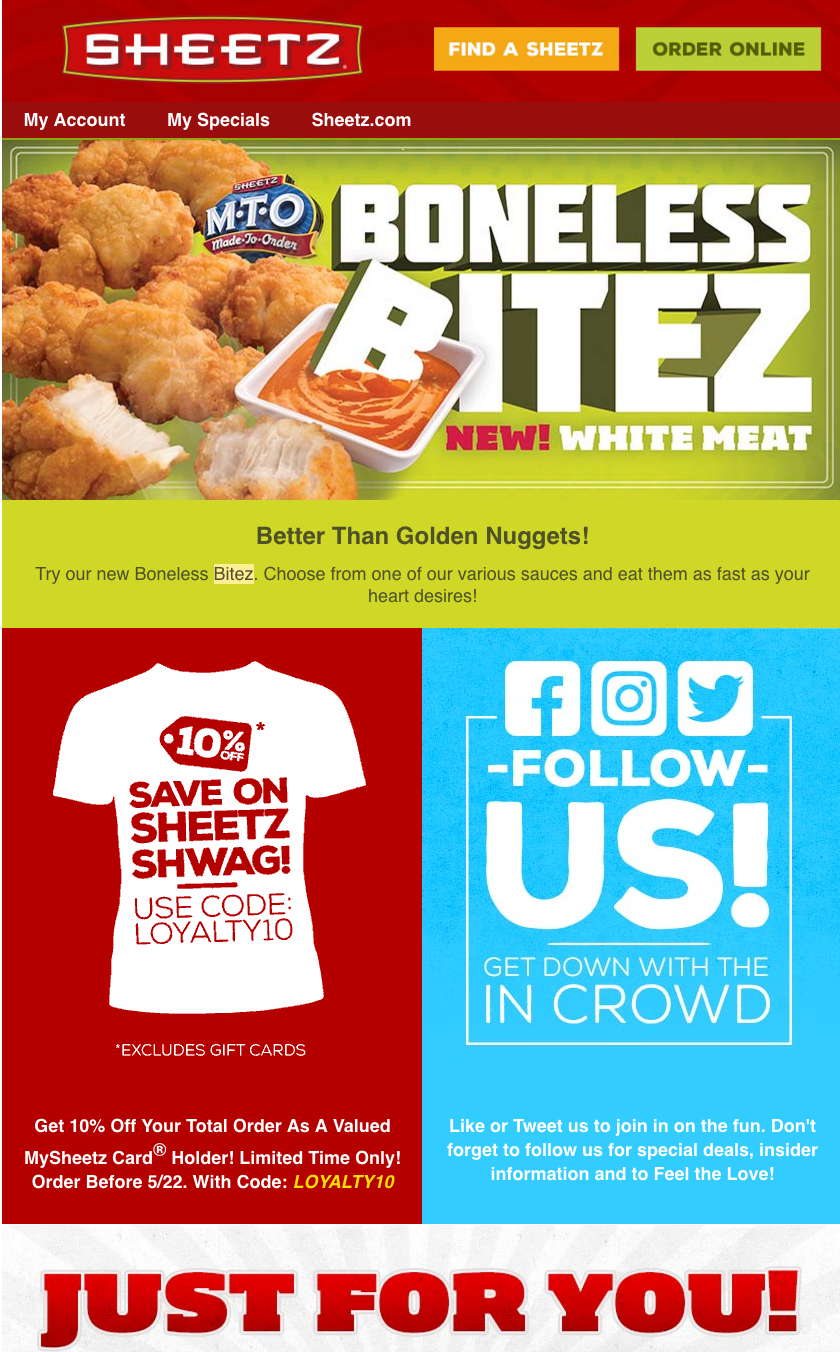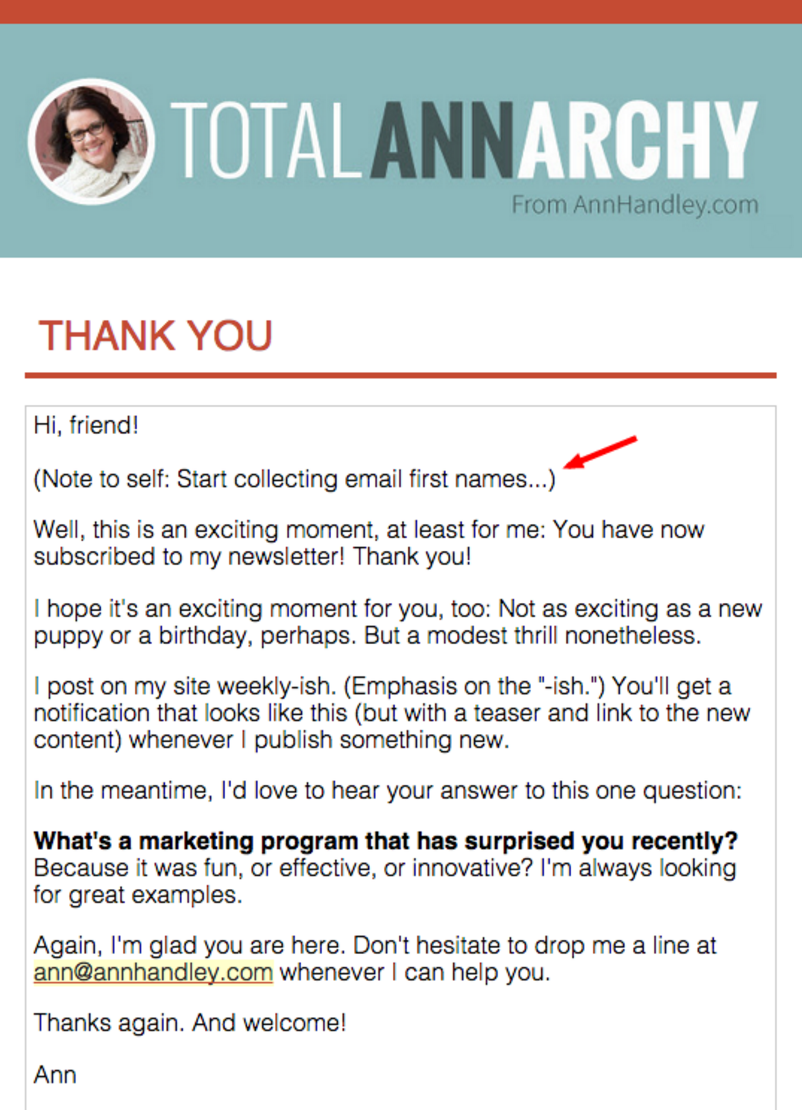How to Develop Tone of Voice to Connect with Your Email Audience
By Marina Hoffmeier June 9, 2016
“People don’t always remember what you say or even what you do, but they always remember how you made them feel.” – Maya Angelou
What you say is powerful, but how you say it leaves lasting impact.
Imagine how the verbiage would be noticeably different in an email about financial investments compared to an email about a doggy daycare. No matter what kind of business you have, tone of voice helps you connect with your audience.
Tone as a way of personification
Tone and voice are two entirely different things but when you put them together effectively, they can equal money in your pocket.
So what’s the difference?
Voice is the mission, or persona. An example of this could be expressive.
Tone is delivery of the mission. Expressive tone is descriptive, flowery and emotional.
Humanizing your brand makes business seem less forced. A natural technique to writing is in tailoring your work for one person, not 100.
Crafting words is an art form so tailoring them to fit the needs of your audience is crucial. The more engaged your readers are, the more they will want to learn and buy from you.
When tone of voice is right, readers will see value in your products and services.
How to establish your tone
Let’s assume you haven’t developed a tone, or maybe you need help strengthening it. The first thing to do is ask questions. Why are you writing this email? What message are you trying to deliver? How do you want it to be perceived? What action do you want your readers to take after reading your email? Narrowing in on your purpose will enhance the message and bolster your writing etiquette.
Second, what are some adjectives to describe the culture of your business? Also, take into account the company’s set of values. These principles will act as the foundation and help shape the tone you are looking for.
Third, think outside the box and don’t underestimate the power of creativity!
When all of these factors come together it will drive your readers to action!
Although there are many tones that exist in email marketing, here are a few approaches to tone that will help get the creative juices flowing.
Informal
Spirited writing style that makes the brand seem more like a friend than an intimidating corporation
Who uses it: Companies that want to develop a friendly and fun persona
Example: Enchanting Marketing
Why it works: It’s playful, yet informative. Just because your style is passionate doesn’t mean it’s unprofessional. If it’s appropriate, go with it.
Promotional
Highly visual content that uses sales verbiage appealing to all consumer personalities
Who uses it: Retail, restaurants, events
Example: Sheetz
Why it works: “Baby Got Bitez!” in the subject line certainly grabbed my attention and the large words and images inside are engaging with limited distractions. An authentic blend of copy and images in a promotional emails like this is crucial.
Formal
More complex writing style and sentence structure that shows a limited range of emotion
Who uses it: Legal, financial, scientific, medical, higher education
Example: LinkedIn
Why it works: It’s professional and gets right to the point without the use of colorful language. LinkedIn acknowledged a serious mistake and used a formal tone to address it. Not only is it consistent with the brand’s reputable personality, but it is to be expected of a professional social media platform. To distinguish themselves from Facebook, Twitter, and other similar networks, a professional tone of voice is essential.
Conversational
Typically written in first person and can be used as a way of storytelling
Who uses it: Businesses looking to add a personal spin on their content
Example: Ann Handley’s Blog
Why it works: This casual “conversation with a friend” style of writing creates a cozy environment to connect with readers on a more intimate level.
Now that you’re a tone pro, remember to stay consistent. Your readers subscribed to your email list because of what they already know, and you don’t want to tarnish the brand by changing up your tone of voice.
Wait! Before clicking send:
- Does your content have rhythm?
- Does it not only capture your audience’s attention but keep them engaged?
- Does it have a clear call to action?
- Does it match the criteria above?
- Is it consistent with your company persona or brand?
- Is it free of spelling and grammar errors?
If yes, then go ahead. Hit send! 🙂
What tone most appeals to you?
Which tone of voice clicks most with your style? How did you find your tone of voice?
Not an AWeber customer yet? Sign up today!
 87% off ends soon!
87% off ends soon! 


